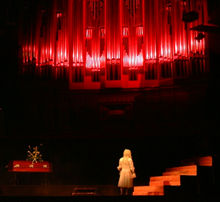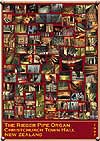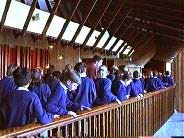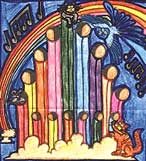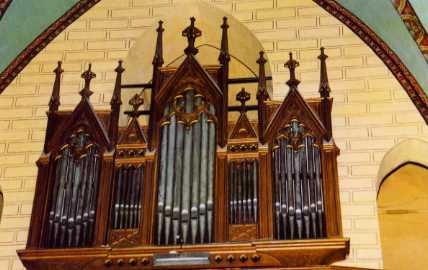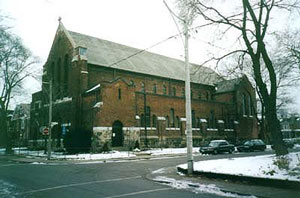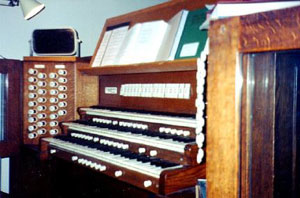| The fame of St. Mary Magdalene’s and its music spread far and wide, and it became a place of musical pilgrimage for visitors from around the world. It was very common to have tourists from the major hotels telephone the parish office, asking for service times, and almost invariably adding to the request, ‘Will Dr. Willan be there?’ On at least one occasion the Rector, somewhat annoyed at the priorities of the caller, answered with, “Yes, Dr. Willan will be here. And Jesus will be here too!”I first heard the organ and met Dr. Willan while a teen-age organ student and schoolboy. There is nothing like the brashness of youth. A friend from the same independent school who was also studying the organ, and I decided we should make the pilgrimage and hear the Great Man and his choir. Considering the fame of its precentor, our first surprise was the rather small building, rather plain in exterior design. We had expected something more grand. On entering, our impression changed. There was an atmosphere of loftiness and space, far beyond the dimensions of the place. The architect had done wonders. There was plenty of reflective surface on walls, ceiling and floor. Although the accoutrements of Anglo-Catholicism were very much in evidence, there was no sense of clutter, and the nave was attractively austere. Both my friend, Bob Evans, and I were fascinated by the echo when a busy acolyte set a candle holder down none too gently at the altar. That boded well for the organ, and that proved to be correct. The organ was located, as it is today, on the north side of the chancel with generous openings into the chancel itself and also into the Lady Chapel and north aisle, thus sounding clearly into the nave. Someone had done something right. The architect had made provision for the instrument to be contained within the church, and not in some add-on chamber where its voice could be lost.Bob and I expected to be entertained with a brilliant organ voluntary by Dr. Willan as the congregation assembled, but it was not to be. The organ remained silent until at the sound of a bell, the clergy entered the sanctuary. The celebrant began by singing the invitation to a procession. By great good fortune we had chosen the greatest of Festivals for our visit. The ritual began:
“The Lord be with you…”
“And with thy spirit…”
“Let us go forth in peace…”
“In the name of the Lord, Amen…”
The voices echoed after each line, and after that ‘Great Amen’ the organ came to life. I’ll never forget the thrill of a single pedal note, the bottom D as I recall, with a snarl of reeds and the supporting body of the flues. It set the heart beating and the adrenalin flowing. There was no further introduction, and choirs and congregation rose and sang, ‘Hail , Thee Festival Day’ to the tune which might be considered Willan’s signature composition. The choir and clergy with crucifer, torchbearers and censor, gorgeous banners on high began their solemn procession around the church. The organ can only be described as magnificent, the registrations dramatic and there was no way anyone present could avoid an eagerness to sing. We were being led by a master. Between stanzas of the hymn, which were taken surprisingly slowly to our thinking, yet effectively, Dr. Willan improvised with the skill and artistry for which he was noted. Reeds and diapasons dominated the ensemble, complementing each other, echoing, contrasting, uniting. Bob and I were in awe.
The service progressed, and I’ll not bore the reader by attempting to describe it all. There were times when the choirs sang a capella, and others when the organ joined in. At quiet moments there were delightfully smooth and blending strings in evidence, at the other moments the pure tone of the flutes dominated. Occasionally the voice of the Tuba rang forth. The music was all that we had imagined and more. The organ, most impressive.
It was not the kind of instrument that would have appealed to E. Power Biggs or other proponents of North German instruments. This was the time when it was considered correct to revere the organs of the Baroque, and especially those of the time and homeland of J. S. Bach. This instrument was not like that at all. It still isn’t. Now it is fully back in fashion. What I am attempting to describe is an organ built in the English tradition, familiar at the beginning of the twentieth century and before. I think Father Henry Willis would have approved, but would have included at least a Great mixture as he built it. That omission has been since looked after in a recent rebuild. A fairly assertive twelfth and fifteenth seemed to cap the Great chorus quite well.
The final hymn was ‘The Strife is O’er, the Battle Done,’ sung, of course to ‘Victory.’ Again the organ pealed and Healey Willan displayed his genius, sending thrills up our spines with his mastery. The Mass ended, we were treated to a gloriously festal improvisation based on three of the hymn tunes that had been used. When it ended, Bob and I with our fascination for the organ, reverence for the organist and the audacity of teenagers, climbed the stairs to the gallery and approached the console, where the venerable musician, well into his seventies, was still seated.
We had been expecting to find a magnificent four manual Casavant at least, that being the ultimate to us in those days, maybe even a Willis! What we found was a rather down at heel three manual console with glass doors instead of the expected rolltop. The draw knobs were in double rows after the English fashion and they and the keys looked very well worn. The name plate said, ‘Breckels and Mathews, Toronto, 1906.’ We had never heard of that before, but in time learned that Breckels and Mathews (and later Mathews) had been builders of quality instruments, at least for sound, but had gone out of business during the Great Depression.
Dr. Willan, dressed in grey flannels and a sports jacket with leather elbows over which was an organist’s surplice, but no cassock, smiled at us, and said, “Hello, boys. I’m Healey Willan.” We introduced ourselves as budding organists and students of a school that was familiar to him. Of course we made it clear that his fame had brought us here and we were honoured to meet him. “So, you came to hear the organ, and expected a four manual Casavant, correct?” Open mouthed we agreed that to be true. “Well, how did the Old Girl sound?” We were enthusiastic about the sound of the organ and the man who played it.
Dr. Willan spent nearly an hour with us, telling us about the Church and the organ, with some information about how the console had been moved to the gallery in 1931 by the Morel organ company, that an English Tuba, (we had been impressed by that sound,) playable at 16, 8 and 4 foot pitches had been added at the time. Then Franklin Legge had extended the Choir flute so it could be played at 8 and 4 foot pitches, making what he described a silvery sound.
All in all our impression was of a magnificent English-style, romantic organ. Of course the building’s incredibly fine resonance contributed much to the effect.
Healey Willan passed away in 1968, after serving St. Mary Magdalene’s for 48 years, with only one leave during that time. He was followed by Dr. Giles Bryant. We set about a project in memory of the Master, the rebuilding and enlarging of the Breckels and Mathews, now known as the Healey Willan Memorial Organ. Much of the work was done under the direction of an organ builder, but by parish volunteers. At first David Legge, son of Franklin Legge, mentioned earlier was in charge, but in time it was taken over by Alan Jackson, whose firm, Alan T. Jackson represents Casavant in the Toronto area. Mr. Jackson completed the work, although the number of volunteers dwindled to almost none.
The original Breckels and Mathews instrument had pneumatic action, and in 1931 L. E. Morel converted it to electro-pneumatic. At the same time the choir moved to a gallery choir loft, and the console was able to go with them.
Bob and I were given opportunities to play the organ later, Dr. Willan being amazingly friendly, inviting us back to visit a number of times. One thing that struck me was that there seemed to be no delay in the sound of the organ at the east end of the building reaching the console in the west gallery. One of the two instruments I was playing at the time was the 3-manual Casavant at St. Clement’s, North Toronto. That organ had the Great, Swell and Pedal divisions in the Chancel, while the Choir, for space reasons, had been installed in the west gallery, the console was in the Chancel. The time lag from the gallery division was frightful, and it was impossible to play with all three manuals coupled. St. Mary Magdalene’s situation was amazing by comparison. Again the superb acoustic design of the church made the difference.
During the rebuild and enlarging, the Breckels and Mathews ventil chests, which were difficult to repair, were replaced with modern pitman ones by Casavant, making the organ more reliable and easier to service. There were also some tonal changes and re-voicing, carried out by Alan Jackson. In its current state the Healey Willan Memorial Organ has three manuals and 51 speaking stops, having grown substantially from the 29-rank Breckels and Mathews of 1906. The original console is still in use, but the combination action is now electronic. While the old glass-doored console is still in use, some of the mechanism provided by Breckels and Mathews and L.E. Morel has become unreliable, and a major rebuild or overhaul appears to be needed.
Almost the entire instrument as it was known to Dr. Willan remains in use. A Doppel Flute on the Great has been removed and the 16′ Tuba pipes have been replaced by a revoiced Trombone by S.E. Warren, from the organ at St. Andrew’s Presbyterian Church, Toronto. Several reeds have been revoiced.**
Summing up the tonal effect of the organ in St. Mary Magdalene’s, it is an outstanding example of a church organ, especially suited to the English Catholic traditions. Its purpose, first and foremost, has always been to accompany the choirs, inspire the congregation in their singing, and generally to enhance the liturgy. The instrument achieves that purpose. As a concert or recital organ, it does have its limitations, but can certainly give a good account for itself with a skilled musician at the console, and to this writer’s ear, is at its best with English and French music. The English ‘tuba tunes’ are most effective when heard here, and it obviously does not require an organ by Aristide Cavaille-Coll to perform the works of Vierne, Franck or Alain with telling effect.
Organ builders involved from the beginning until the present have been: Breckels and Mathews, original builders, responsible for the basic concept, L.E. Morel, Franklin Legge, David Legge (briefly) and Alan T. Jackson, with his firm and Casavant Freres Limitee, whom Mr. Jackson represents. Alan Jackson took over from David Legge, and was responsible for the rebuilding and enlarging of the Healey Willan Memorial Organ, from 1971 until its completion in 1980. Dr. Giles Bryant deserves full credit for initiating the project.
The church has been most fortunate in its musicians. Since the time of Maestro Willan, the organ has been played and the choirs directed by Giles Bryant, Robert Hunter-Bell and currently Willis Noble.
Specifications of the Re-built Organ
Stops marked * contain new pipes
Great: Double Open Diapason 16, I Open Diapason 8. II Open Diapason 8, *Stopped Diapason 8, Gamba 8, Octave 4, *Wald Flute 4, Twelfth 2 2/3, Fifteenth 2, *Mixture IV, *Cornet (mid. C) V 8, *Trumpet 8, *Clarion 4. Great Super
Swell: Lieblich Bourdon 16, Stopped Diapason 8, Salicional 8, Viola da Gamba 8, Vox Angelica TC 8, Principal 4, Suabe Flute 4, Nazard 2 2/3, Flageolet 2, Tierce 1 3/5, *Sharp Mixture IV 1, *Bassoon 16, Trumpet 8, Oboe 8, Shawn 4. Tremulant. Choir Sub, Choir Super
Choir: (Enclosed) Gedackt 8, Dulciana 8, Unda Maris TC 8, Chimney Flute 4, *Spire Principal 2, *Larigot 1 1/3, *Cymbel III ½, Cremona 8, Tuba 8. Tremulant. Choir Sub, Choir Super.
Pedal: Sub Bourdon (wired) 32, Open Metal (Gt.) 16, Open Wood 16, Subbass 16, Lieblich Bourdon (Sw.) 16, Octave 8, Flute 8, Super Octave 4, Recorder 4, *Mixture IV 2 2/3, Ophelceide 16, Bassoon (Sw.) 16, Trumpet (Gt.) 8, Clarion (Gt.) 4
Couplers on Tilting Tablets above Swell: Great, Swell and Choir to Pedal, 16 and 8. Swell and Choir to Great, 16, 8 and 4. Swell to Choir: 16, 8 and 4.
Adjustable combination pistons: 6 thumb pistons to each division. 10 General pistons, Thumb and Toe. General Cancel and Adjuster. Great and Pedal combinations coupled.
Reversible Pistons: Great to Pedal: thumb and toe. Swell and Choir to Great – thumb. Swell and Choir to Pedal, thumb. Swell to Choir, thumb. Full Organ, toe.
© Ross Trant
Wellington, Ontario, Canada
April, 2004
* Precentor – a choirmaster, often a cleric and in a cathedral, who has been given absolute authority over the music sung and played in the cathedral or church to which he is appointed.
** For this and other technical information, I am indebted to a recent book, ‘Organs of Toronto’ by Alan T. Jackson and James Bailey, published by the Toronto Centre of the Royal Canadian College of Organists.(Highly recommended.) For all else and opinions, personal experience, my aging memory, and conversations with many others familiar with the instrument. For inspiration, the life and creativity of Healey Willan.
Further Links
The Church of St. Mary Magdalene
Healey Willan, Peerless Ecclesiastical Composer |
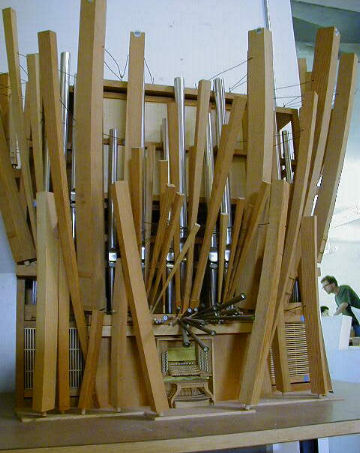 Since most of us have been trained as organ-builders and not as designers or architects, this creates a problem in the profession, but one with a relatively simple solution. Why not use the professionals who do indeed have the required knowledge about architecture and style as well as the skills needed to carry out good design? The organ-builder can supply the architect or designer with the parameters he has to consider. We have been doing this for several years now and are very pleased with the results of this co-operation. Of course, organs do not have to look like the Walt Disney Concert Organ designed by Frank O. Gehry in order to be labeled contemporary. There are unlimited possibilities for designs and detail. Although we are a relatively young company, we do have a few interesting examples of contemporary organ design to show. You are welcome to look at our web-site. ( http://www.gg-organs.com )
Since most of us have been trained as organ-builders and not as designers or architects, this creates a problem in the profession, but one with a relatively simple solution. Why not use the professionals who do indeed have the required knowledge about architecture and style as well as the skills needed to carry out good design? The organ-builder can supply the architect or designer with the parameters he has to consider. We have been doing this for several years now and are very pleased with the results of this co-operation. Of course, organs do not have to look like the Walt Disney Concert Organ designed by Frank O. Gehry in order to be labeled contemporary. There are unlimited possibilities for designs and detail. Although we are a relatively young company, we do have a few interesting examples of contemporary organ design to show. You are welcome to look at our web-site. ( http://www.gg-organs.com )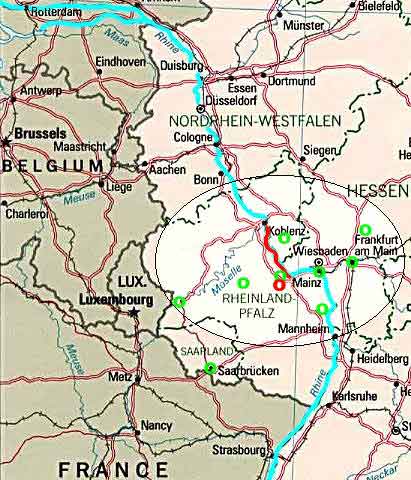 Geographical Definition
Geographical Definition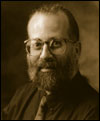 I’ll apologize upfront. This is a blatant non-commercial commercial…for me, for my program (Pipedreams), for my medium (public radio). Or is it more than that? Might you be involved in this picture, too? Let’s give it a look.
I’ll apologize upfront. This is a blatant non-commercial commercial…for me, for my program (Pipedreams), for my medium (public radio). Or is it more than that? Might you be involved in this picture, too? Let’s give it a look.
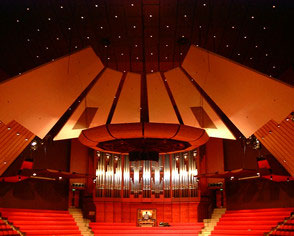 Over the last four years since its installation, the sustained, successful profile of the organ here has become something of phenomenon both locally, nationally and increasingly internationally. People often ask me to explain why and how this has happened. The honest truth is I’m not sure, but I guess it reflects a whole number of factors, not least civic pride (the people virtually gave the city its organ) and feast succeeding famine. But four years is too long a time to write off as a mere honeymoon period! (A preview of the first year can be read at
Over the last four years since its installation, the sustained, successful profile of the organ here has become something of phenomenon both locally, nationally and increasingly internationally. People often ask me to explain why and how this has happened. The honest truth is I’m not sure, but I guess it reflects a whole number of factors, not least civic pride (the people virtually gave the city its organ) and feast succeeding famine. But four years is too long a time to write off as a mere honeymoon period! (A preview of the first year can be read at 
